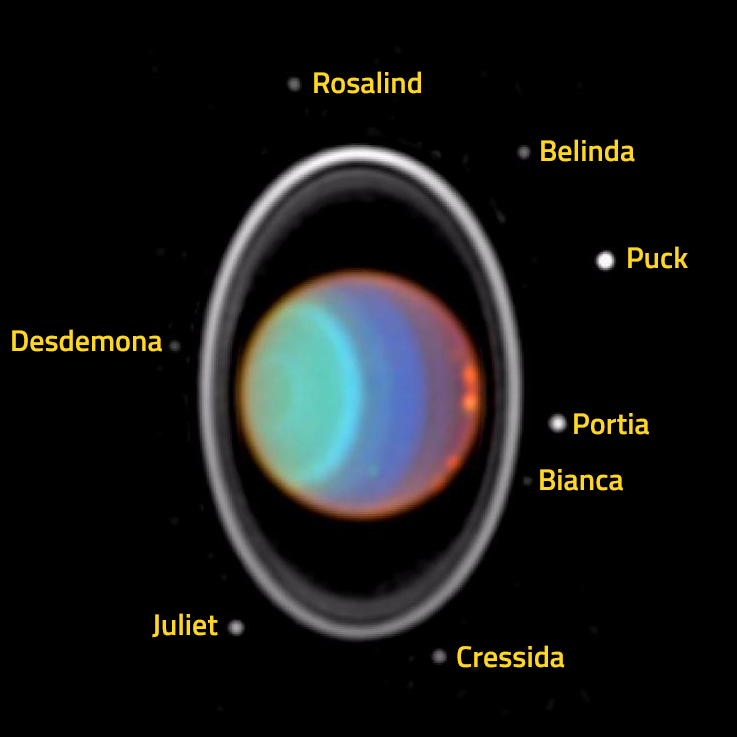Portia, a moon of Uranus

Image of Uranus in infrared from Hubble Space Telescope. Image was taken on 28th July 1997, capturing clouds in the atmosphere of Uranus, its rings and 8 of its moons, including Portia. Image credit: NASA/JPL/STScI
41,073 miles
87 miles
Portia is one of the 27 moons of Uranus. It is the seventh closest moon to orbit the planet, orbiting at an average distance of 66,100 kilometres (41,075 miles). Portia has a diameter of 140 kilometres (87 miles) and takes only 12 hours to complete an orbit of the planet.
Portia is classed as an inner regular prograde moon of Uranus. It travels around the planet in the same direction of the planet's rotation and is believed to have formed from materials spinning around the planet.
Portia is the largest member of a group of Uranus' moons called the Portia group. The Portia group contains nine moons (Bianca, Cressida, Desdemona, Juliet, Portia, Rosalind, Cupid, Belinda and Perdita) which have similar appearances and characteristics. These moons may have unstable orbits which leads to the possibility that, at some point in the distant future, they could collide with each other, break up into pieces, form rings or crash into Uranus.
Most moons of Uranus get their names from characters in plays written by William Shakespeare. Three of the moons get their name from a poem written by Alexander Pope. Portia is a character in William Shakespeare's play The Merchant of Venice, written around 1596 to 1597.
Portia is a wealthy heiress whose father has decreed that her future husband will be the one who chooses from three caskets the one that contains a picture of Portia. Bassanio, a Venetian nobleman, chooses the right casket and wins Portia's hand in marriage. Bassanio has a friend called Antonio who owes money to a moneylender called Shylock. As Antonio cannot pay, Shylock demands a pound of Antonio's flesh instead. Portia dresses as a lawyer and successfully argues that Antonio cannot give a pound of flesh without drawing blood, which breaks a clause in the contract.





